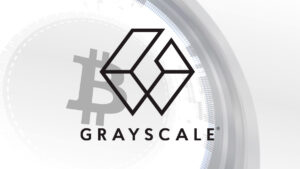Binance, the renowned cryptocurrency exchange that has become a staple in the digital asset landscape, has been weaving a web of intrigue to avoid the threat of prosecution by U.S. authorities.
According to a recent report in the Wall Street Journal, the company developed a cunning plan to evade potential legal ramifications by launching a U.S. entity in 2019.
Lobby or What?
As U.S. regulators’ looming crackdown on unregulated offshore crypto players drew nearer, any lawsuit from these authorities would have been akin to “nuclear fallout” for Binance and its officers. This warning, delivered by a Binance executive to their colleagues in a private chat, reveals the high stakes involved in this enterprise.
The report draws on messages and documents from 2018 to 2020 reviewed by The Wall Street Journal and interviews with former employees to paint a picture of Binance’s machinations. The company, founded in 2017, and Binance.US are more intertwined than they have publicly disclosed, mixing staff and finances and sharing an affiliated entity that bought and sold cryptocurrencies.
Binance.com primarily operated from hubs in China and Japan, yet a fifth of its customers was based in the United States. Binance.US, on the other hand, is based in San Francisco.
However, the report reveals that Binance developers in China maintained the software code that supported Binance.US users’ digital wallets, potentially giving Binance access to U.S. customer data.

Since 2020, the Department of Justice and Securities and Exchange Commission have been investigating Binance’s relationship with Binance.US, citing subpoenas and people familiar with the matter.
The U.S. regulators could claim the power to police Binance’s entire business if they determine that Binance has control over its U.S. entity.
In response to the scrutiny, a Binance spokesperson noted that the company had already acknowledged that it did not have adequate compliance and controls during those early years. The spokesperson added that Binance is now a very different company regarding compliance.
This latest report about Binance and its efforts to avoid prosecution by U.S. authorities is just one example of centralized cryptocurrency exchanges’ challenges. Such statements highlight these centralized systems’ inherent flaws and shortcomings, leaving them vulnerable to regulatory scrutiny and potential legal action.
It is becoming increasingly clear that decentralized systems may be a better solution for the future of cryptocurrency. By decentralizing power and control, these systems offer greater transparency and security, reducing the risk of fraud and manipulation.
While decentralized exchanges are still in their infancy and face challenges, they represent an exciting and promising development in cryptocurrency.
Seeing how centralized and decentralized exchanges develop and compete will be fascinating as the cryptocurrency landscape evolves.










